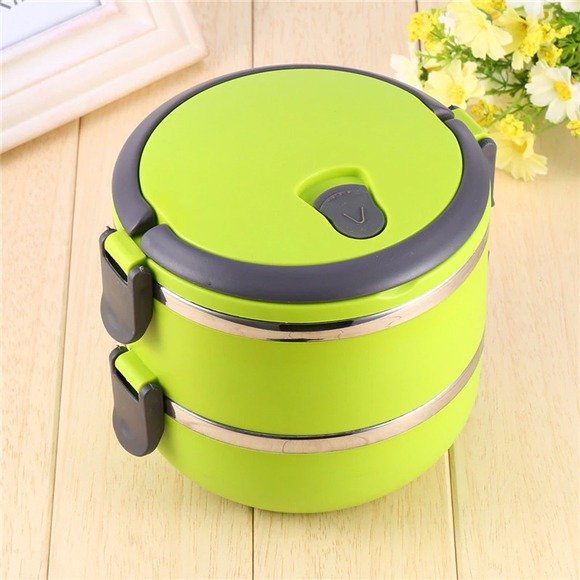The 2-Layer Portable Lunch Box is exactly what it sounds like: a lunch box with two compartments stacked on top of each other. This design is perfect for separating different ingredients in your meal, like keeping your salad crisp and your pasta warm. Think of it as a smaller, portable version of a bento box, allowing you to carry a variety of foods without having to mix them together.
Why Choose a 2-Layer Lunch Box?
Why settle for a single-compartment lunchbox when you can have the versatility of two layers? The 2-layer design is perfect for those who want to keep their food separate or who want to bring a multi-course meal without the need for multiple containers. It’s a practical solution that adds a little luxury to your daily routine.
Benefits of Using a 2-Layer Portable Lunch Box
Organization and Portion Control
One of the standout benefits of a 2-layer lunch box is how it helps with portion control. Each layer provides a dedicated space for different food items, making it easy to organize your food. You can separate your main course from your sides or keep your snacks and desserts in different compartments. This not only makes for a more visually appealing meal, but also helps you maintain a balanced diet.
Freshness and Temperature Control
With a 2-layer lunch box, you can keep your food fresh and at the right temperature. Many of these containers are designed with insulation in mind, ensuring that your food stays hot or cold until you’re ready to eat. Some even come with separate lids or seals to prevent splashing and keep moisture in.
How to Choose the Best 2-Layer Portable Lunch Box
- Size and capacity
One of the most important factors is the size of the lunch box. You want something that is big enough to hold your food but still portable enough to carry. Consider what you usually pack for lunch and choose a size that fits your needs. - Content
The material of the lunch box affects its durability, weight and insulation properties. Stainless steel is durable and retains heat well, while plastic is lighter and often more affordable. Silicone is a great option for those who want something flexible and easy to clean. - Insulation
If you’re planning on bringing in hot food, insulation is key. Look for lunch boxes with insulated layers or compartments that can help keep your food warm until you’re ready to eat. Some lunch boxes also have thermal bags or inserts for additional temperature control. - Leak proof design
No one wants to deal with a lunch box. Be sure to choose one with a secure, leak-proof design, especially if you plan to pack liquids like soups or sauces. Many 2-layer lunch boxes come with tight lids or seals to prevent slipping. - Portability
Consider how easy it is to carry a lunch box. Some come with handles, straps, or carrying cases that make them easier to transport. Weight and size also play a role in how portable a lunchbox is, so choose one that fits your lifestyle.

Materials: What to Look For
- Plastic
Plastic lunch boxes are lightweight, affordable. However, not all plastics are created equal. Look for BPA-free options to ensure your lunchbox is safe for food storage. - Stainless steel
Stainless steel is durable, long-lasting, and has excellent insulating properties. It is slightly heavier than plastic but is resistant to staining and does not retain odors. Stainless steel lunch boxes are also easy to clean and are often dishwasher safe. - Silicone
Silicone is flexible, durable, and easy to clean. It is also heat resistant, making it a good choice for packing hot foods. Silicone lunch boxes are often collapsible, making them a space-saving option when not in use. - Glass
Glass lunch boxes are ideal for those who want a non-toxic, eco-friendly option. They are durable and will not retain odors or stains. However, they are heavier and more fragile than other materials, making them less ideal for use on the go.
Tips for Packing Your Lunch Box
- Plan your meals.
Planning your meals ahead of time can help you pack a balanced and satisfying lunch. Think about what you want to eat throughout the day and pack accordingly. This can also help you avoid packing too much or too little food. - Use dividers.
Dividers are a great way to keep your food separate and prevent it from mixing together. Many 2-layer lunch boxes come with built-in dividers, but you can also use silicone cups or small containers to make your portions. - Pack wet food separately.
To keep your lunch fresh and avoid bloating, pack wet food separately.

